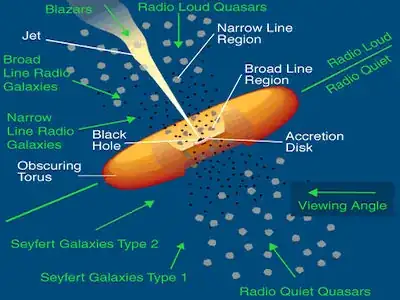There is no rigorous distinction between the two terms. Any distinction is based on historical usage, and seems to be continually decreasing.
"Active Galactic Nucleus" (AGN), refers to the active core of a resolved galaxy. Initially this term was purely descriptive of observations, but has now come to be used more to refer to the general (unified) class of object -- related to an active massive black-hole (MBH). I.e. AGN has become more of a general, theoretical concept - of which there are many subtypes based on observations and physical distinctions.
"Quasar" comes from "Quasi-Stellar Object" (QSO), which originally referred to observed point sources of primarily optical light. These were eventually identified to be the especially bright version of 'Seyfert' galaxies. Often with strong radio emission.
"Seyfert" galaxies were originally identified as ones with peculiar spectroscopic features -- narrow- and broad- line regions (NLR, BLR), often with low to moderate radio activity. At some point there was an arbitrary cut-off in optical brightness between quasars and seyferts.
"Blazars" are extremely bright point-sources in the radio, and more recently high energy (e.g. X-ray and gamma-ray).
The unified, now canonical, understanding of AGN is depicted below:

Edit:
I can't tell you why general, nearer objects than Mrk 231 aren't quasars, but Mrk231 is one because it has a optical, extremely-bright AGN point-source; IR excess; and both characteristic broad and narrow line regions. Frankly, why news articles and press releases call one particular object, as opposed to another, the "nearest" of a class of ambiguously distinguished --- yet physically unified --- objects may not be very meaningful.
